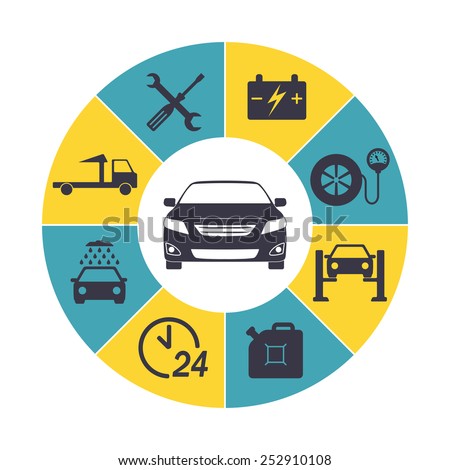Evaluating Your Vehicle'S Warning Indicators: What They Truly Share
Evaluating Your Vehicle'S Warning Indicators: What They Truly Share
Blog Article
Web Content Develop By-Lauritsen Shepherd
When you lag the wheel, those glowing caution lights on your dashboard can be a little bit bewildering. Do you know what they're attempting to inform you concerning your car's health and wellness? Recognizing the relevance of these lights is vital for your safety and the long life of your automobile. So, the following time among those lights pops up, would not you want to analyze its message accurately and take the required steps to address it?
Common Caution Lights and Interpretations
Identify common caution lights in your car and comprehend their significances to ensure safe driving.
The most typical caution lights include the check engine light, which signifies issues with the engine or emissions system. If this light begins, it's vital to have your vehicle inspected immediately.
The oil stress cautioning light suggests low oil pressure, calling for instant attention to stop engine damage.
A flashing battery light might suggest a damaged billing system, possibly leaving you stranded if not addressed.
The tire stress tracking system (TPMS) light informs you to low tire stress, influencing vehicle security and fuel effectiveness. Ignoring this could bring about risky driving conditions.
The abdominal light suggests a trouble with the anti-lock braking system, endangering your capacity to quit promptly in emergencies.
Last but not least, the coolant temperature level warning light warns of engine overheating, which can cause severe damage if not dealt with quickly.
Understanding these typical warning lights will certainly help you deal with issues promptly and preserve risk-free driving problems.
Importance of Prompt Interest
Comprehending the common warning lights in your car is just the first step; the relevance of promptly addressing these warnings can't be stressed sufficient to guarantee your safety and security on the road.
When vehicle grooming brightens on your control panel, it's your vehicle's means of connecting a prospective problem that needs focus. Disregarding these cautions can lead to more severe problems down the road, compromising your security and potentially costing you extra in repairs.
Motivate interest to warning lights can protect against malfunctions and crashes. For example, a blinking check engine light can suggest a misfire that, if left neglected, could cause damages to the catalytic converter. Resolving this promptly can save you from a costly repair work.
Similarly, a brake system warning light might signify low brake liquid or used brake pads, critical parts for your safety when driving.
DIY Troubleshooting Tips
If you notice a warning light on your dashboard, there are a couple of do it yourself troubleshooting suggestions you can try before seeking specialist help.
The initial step is to consult your auto's handbook to comprehend what the specific warning light suggests. Occasionally the concern can be as straightforward as a loose gas cap triggering the check engine light. Tightening up the gas cap may settle the issue.
Read the Full Piece of writing is a low battery, which can cause numerous alerting lights. Inspecting the battery connections for rust and guaranteeing they're safe and secure might repair the trouble.
If a warning light lingers, you can try resetting it by detaching the car's battery for a few mins and after that reconnecting it. Additionally, examining your vehicle's fluid levels, such as oil, coolant, and brake fluid, can help repair cautioning lights connected to these systems.
Conclusion
In conclusion, comprehending your cars and truck's warning lights is essential for maintaining your lorry running smoothly and securely. By promptly resolving these alerts and recognizing what they indicate, you can avoid pricey repair services and prospective malfunctions.
Keep in mind to consult your cars and truck's manual for specific details on each advising light and do something about it as necessary to ensure a hassle-free driving experience.
Remain notified, remain safe when traveling!
